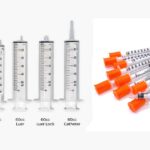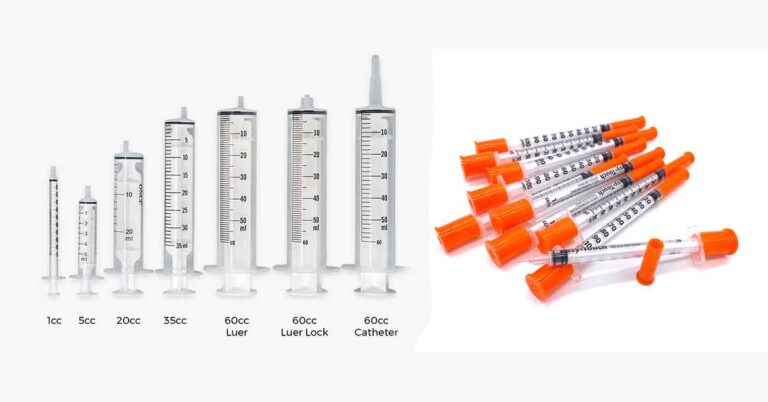Crepe bandages are types of bandages used in keeping wound pads, gauze, and dressing in place over the wound. They are made of materials such as sterile cotton, cotton and wool, or cotton and rayon.
They are used for sprains, cramps, dislocation, aches, or strains that need firm support. Due to the gentle compression they offer, they help to reduce swelling. They also support vital tissues. Ideally, the bandage is supposed to last for 24 to 48 hours.
Sprains occur mostly in the wrist, ankle, foot, when the ligament is stretched or twisted, while strains occurs mostly in the hamstring, quadriceps, lower back and calves when the muscle is overstretched or contracted.
Crepe bandages are mostly reusable, and can be used in hospitals, clinics, schools, sports establishments, rehabilitation centers, homes.
Different Types of Crepe Bandages
Crepe bandages are classified based on the material used to produce it and the purpose they are used for. Based on the materials, we have:
Cotton Crepe Bandage:
It is made of cotton material. It is highly elastic, soft, comfortable, latex-free, and permeable to air. They come with a clip such as elastic band clips or metal band clips, or without clips. There are different sizes such as 5 cmx4.5 m, 7.5cmx4.5 m, 10 cmx4.5 m, 15 cm x 4.5 m, 20cmx4.5 m.
Cotton bandages can be for single use, but there are reusable varieties such as ankle crepe bandage, wrist crepe bandages and hand crepe bandages.
- Uses: In orthopedics, surgery, and protection during sports training.
- If sterilized, it can be used in wrapping wounds, and operation.
- It is a better auxiliary treatment for extremity sprain, wrapping of parenchymal injury, joint pain.
- Since gauze bandage is not elastic, it replaces it as it helps blood circulation.
Elastic Crepe Bandage:
Elastic crepe bandages are made of cotton, or spandex (a synthetic fiber, polyether-polyurea copolymer), known to be very elastic.
It is an elasticized, flexible bandage for injuries like sprains, pain in the joint, dislocation, cramp that require less compression. Other bandages types such as cohesive bandages, adhesive bandages, or elastic plain bandages offer strong compression to injuries. However, it can treat muscle sprains and bone fractures in a way similar to elastic plain bandages
This type of bandage has good comfort, skin tolerance, breathability because of the weave. This bandage should be durable to protect the wound, but also flexible to allow the wearer free movement.
- Uses: Prevent dirt and microorganisms from injury.
- Make sure the dressing is secured in place.
- Reduce the bleeding and prevent the wound from worsening.
- Bind the skin together to improve the healing process.
Elastocrepe Bandage:
This is a woven short stretch crepe bandage. It is made of non-fraying edges, and a high twist cotton and rayon fabrics. Ideal for use with traditional paste bandaging techniques. The weave helps it to prevent stretching unnecessarily, durability, uniform compression, and provide pressure. The central yellow line helps to improve precise application.
This bandage type comes in different sizes such as 5cm x 4.5m, 7.5cm x 4.5m, 10cm x 4.5m, 15cm x 4.5m, and are reusable. It has non-fraying edges, and can be used in body parts such as the elbows, knees, ankles or lower legs.
- Uses: Ideal for supporting joints and ligaments after mild strains.
- For the management of varicose venous ulcers, and leg ulcers.
- Provide support in compressive post-surgery or light orthopedic support.
Adhesive Crepe Bandage
A lightweight strapping bandage used to tape ankle, knee, hands, and wrist used to treat sprains.
Types of Crepe Bandages Based on Body Part
We have crepe bandages for different body parts such as:
- Ankle: Reduces swelling in the ankle, but does not limit the movement.
- Leg: Reduce swelling and provide support to the limb or joint
- Knees: Offers gentle compression for swelling in the knees.
- Wrist: For sprains, dislocations, joint issues and in burns, skin grafts. It can also be a pressure bandage.
- Shoulder: Made of flexible material to allow the shoulder muscles and joint movement.
- Hands: Reduce swelling, restrict movement, and support the muscles, joints in the hands if injured.
What to Consider while Buying Crepe Bandages
While buying a crepe bandage, one should consider factors such as:
- The type of injury or condition the bandage is used for.
- The part of the body that the bandage will cover
- Elasticity of the bandage.
- The size: length and breath of the bandage. Using a smaller crepe bandage over a larger area can lead to many layers of dressing, decreasing breathability and mobility.
- Durability of the bandage, especially in conditions that require much time to heal.
- The color of the bandage.
Uses of Crepe Bandage
Crepe bandages are used for different purposes such as:
- They are good pressure dressing for burns
- Used to treat ankle, wrist, and foot sprains.
- To compress a swollen area, but without cutting off blood circulation.
- To secure wound dressing in place and offer protection.
- Reduce swelling by compressing knees, ankle, and musculoskeletal injuries moderately.
- Offers support to injured joints during rehabilitation or strenuous activities such as running, boxing.
How to Use the Crepe Bandage
Prevention of knee injury with crepe bandage:
- Extend your leg straight, making sure the knee joint is aligned and not twisted
- Use adequate tension to secure the crepe bandage around the knee in a way that provides mild compression without restricting blood flow.
- From below the knee at mid-calf height, starting from the outside of the knee, wrap the bandage
- Circle the bandage below the knee a few times, creating an anchor.
- Pull the bandage diagonally towards the inner thigh, but do not cross the knee cap.
- Wrap the bandage around the lower thigh above the knee cap.
- Wrap diagonally behind the knee towards the outer lower leg and around the calf many times, then up towards the back of the lower thigh, creating a figure-of-eight pattern.
- After securing the bandage, make sure the knee joint movement is not restricted.
- Finally, secure the crepe bandage with microporous tape.
Ankle injury:
- Wrap the bandage around the calf in a loop above the ankle with the injury to secure it.
- Using a figure-of-eight pattern, wrap the bandage across the joint, making sure the bandage loops above and below the ankle.
- Loop it twice around the calf and secure with a tape.
Wrist Injury:
- Wrap the bandage three or four times around the forearm above the point of the injured wrist.
- Using the figure-of-eight pattern, wrap the wrist and base of the hand with the bandage. This will help the bandage to cover the joints above and below equally.
- Loop it firmly three to four times around the lower forearm and secure with a microporous tape.
References:
- https://www.hospitalsstore.com/crepe-bandage-price/
- https://www.steroplast.co.uk/knowledge-base/how-to-use-a-crepe-bandage-step-by-step-guide.html
- https://medical.essity.co.uk/brands/orthopaedics/category-product-search-o/physiotherapy-bandages/bandages/elastocreper.html
- https://www.advacarepharma.com/en/medical-devices/elastic-crepe-bandages













Dear Sir/Madam,
My name is Otto Felix, purchase manager Inspector Systems GmbH. Could you please share with us your latest catalogue and pricing for our internal review and further processing.
Please send your email to my direct email address (purchase9@lnspectorsystems.com)
Hope to establish a good business relationship with you!
Best regards
Otto Felix
Purchase Department.
Inspector Systems GmbH |
Johann-Friedrich-Böttgerstr. 19
63322 Rödermark
Phone: +496074 9170030
Email: purchase9@lnspectorsystems.com
th593654@gmail.com